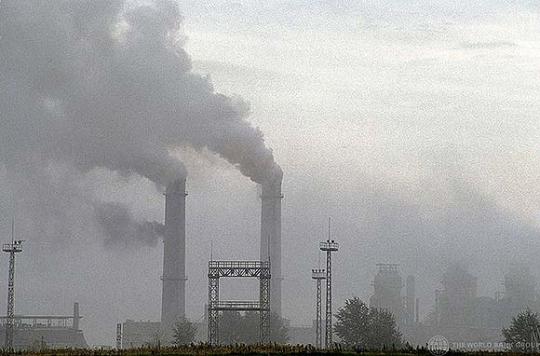
Our response to climate change at the global level clearly needs improving. While some governments are managing to set and enforce limits on the emission of greenhouse gases, an international agreement that is both enforceable and meaningful remains elusive. Measures undertaken by private individuals and organizations, though plentiful, largely fail to connect to the political process and continue to fall short in aggregate. Is there a way to combine these public and private efforts? We think there is, as we’ve explored in a recent NZZ article and ETH blog post: a new type of liability insurance.
Looking to the insurance industry for addressing climate change is not new (see, for example, Nobel Laureate Robert Shiller’s column; the Geneva Association’s statement; and the climate change and insurance links discussed at the World Bank’s recent Understanding Risk conference). What has been lacking, however, are ideas for employing insurance instruments at scale, across national boundaries, and in a way that maximizes existing capacities and market mechanisms.
A new type of liability insurance
Here is how it would work: firms that are at the very beginning of the causal chain, extracting raw materials which contribute to climate change (primarily fossil fuels), would be compelled to take out a form of liability insurance. The expense borne by extractive firms for the insurance premiums would be passed through, ultimately to consumers, in the form of price increases for intermediate and final products.
Insurance companies would use the collected premiums for compensation for losses to public infrastructure due to climate change, as well as for prevention of losses in the form of investments toward climate change mitigation and adaptation.
To implement this proposal coordination and technical expertise will be needed. The amount of losses due to extreme weather that should be attributed to climate change can be approximately estimated based on historical data. Of all the man-made climate change, roughly 3/4 is caused by consumption of fossil fuels. This proportion of man-made climate change can be attributed to the oil, gas, and coal companies, according to the carbon content of the fuels they extract and sell. Other raw materials could be also included in such calculations. Standards would have to be established and updated over time, as our ability to assess climate change risk and attribution improves.
Setting sensible rates for premiums would be up to insurance companies, based on the established standards. For a back-of-the-envelope calculation: the value of fossil fuels extracted globally varies from year to year, but is around $5 trillion annually. If we assume premiums to be on average 10% of raw material prices and 80% of extracting firms take out liability insurance, total premiums would amount to around $400 billion annually. This is equivalent to a CO2-price of about $15 per metric ton of CO2, a value that is in line with low estimates of CO2‘s external cost (e.g., estimated by William Nordhaus). The table below offers some background on these rough calculations.
Click here to view the table in full detail
A significant part of the premiums would have to be pooled and invested such that it can be made available quickly for compensating payments. National, regional, or municipal administrations could be eligible for making claims and ask for compensation for helping to repair public infrastructure damaged during hurricanes, floods, etc. (e.g. following the damage from hurricane Sandy in 2012).
Additional financial instruments, like catastrophe bonds, already exist and could be included to manage such funds. Aside from compensation, the premiums should also be used for prevention of losses due to extreme weather, either through investments in climate-friendly projects (climate change mitigation) or investments to improve infrastructure resilience (climate change adaptation). Such investments are currently undertaken through the Green Climate Fund, for example.
Using market mechanisms to stimulate compliance
Aside from its technical feasibility, using liability insurance makes sense politically. Binding worldwide agreements, which are necessary to enforce typical treaties, are not needed. Liability insurance works if a number of relevant firms begin to participate. The compulsion for other firms to join could build over time, as a result of national laws in selected countries and as an increasing number of decision makers, NGOs, and consumers demand that inputs to final products be insured.
International retailers might refuse to sell merchandise from factories that run on non-insured energy. Extractors of raw materials themselves may choose to take out liability insurance to prevent being taken to court for damages caused by extreme weather. The industry overall may even welcome such liability insurance and the opportunity to become, from a public relations point of view, part of the solution.
The proposed scheme of liability insurance shifts the burden for enforcement from governments primarily onto multi-national companies (insurers and extractive firms as the insurance takers). It avoids the pitfall of many global agreements that rely on public enforcement alone, which tend to fail due to the large gap in capacity between governments of different countries. It represents a more equitable solution to a global problem, because the capacity to enforce will be more evenly distributed across countries.
In terms of next steps, discussions among key players including the insurance industry are needed to further develop the technical proposal and to generate sufficient support. Many of the challenges remain to be solved, others have yet to be discovered. However, this proposal offers a potentially game-changing opportunity for the public and private sector to take advantage of existing capacities and take concrete steps forward.




Join the Conversation